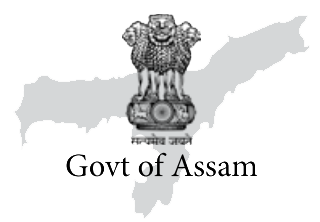apan Deka (41), a Block Resource Person (BRP) under Samagra Siksha Abhijan in Bongaigaon district of the State, had no idea that he would be the catalyst to something that would go on to become a Guinness World Record in the category of “The Largest Online Photo Album of Handwritten Notes on a Single Person”.
It was his enthusiasm that made his entry of October 26, 2022 as the first of the 42,94,350 entries on Lachit Barphukon, the great Ahom military general of the 17th century, that would go on to give Assam a unique honour.
That was the day when the Assam Chief Minister Dr. Himanta Biswa Sarma launched a mobile application
“Lachit Barphukan” & a portal lachitbarphukan.assam.gov.in at an official ceremony in Guwahati inviting people from all over the world to pen their impression of the Ahom General.
“I was delighted to get a chance to write about Lachit on a public platform. I wrote the essay in Assamese and uploaded the three pages in the portal,” said Deka while recalling the day.

“I had no idea that I would start this chain leading to a world record. I did it out of enthusiasm. But once I got to know about this, I felt that my patriotism has contributed to this. My family members, too, wrote on the subject,” Deka, who hails from Rampur Ajgara village of Ghagrapar in Nalbari district, told Asom Barta.
“In the Boitamari education block in the district, we also asked students to pay their tribute to the great general by writing an essay on him. We collected 1,095 essays from school students. After due diligence, 250 essays were sent to the Bongaigaon district administration for uploading,” added Deka.
Trailokya Borkakati, Assistant Manager of Assam Electronics Development Corporation Ltd (Amtron), the Assam Government agency, which had developed the web portal and mobile application (available in android and IOS) to facilitate the uploading of hand-written essays, said that to monitor the entire operation, a team was constituted with 25 officials.
“Initially, the response was slow. But as days passed, I realised that the bandwidth we had for uploading these essays will not be sufficient, Borkakati told this reporter.
He said that due to increasing number of hits in the portal and mobile app, on November 19, ten high performance servers were commissioned and integrated into a distributed environment at the Assam State Data Centre by an Amtron technical team to manage uploading of hand-written essays. In addition to this, six high performance servers were deployed at Amtron Data Centre to download certificates for the participants. Moreover, bandwidth was increased to 9 GBPS for effortless execution of the project.
Utanka Kalita, a software developer in Amtron, said that the software developed was user friendly and was accessible with even poor Internet connectivity while the mobile number of the registered users was validated using OTP-based authentication software. “Other personal details of the users were recorded to eliminate duplicate registration,” he said.
“We had set up a helpdesk (24X7) to address queries and guide people on how to register and upload the essay. The development team along with the data centre team worked round-the-clock to monitor the server and bandwidth consumption during the peak days. To meet the heavy demands, clustering of server and load balancer were set-up. Our support team was also in touch with district authorities to intimate the district-wise progress and other information,” Kalita informed this newsletter.
On 26th November when entries were closed, more than 45+ lakhs users had already registered, and more than 57 lakh images were uploaded. Forensic audit was conducted to eliminate duplicate images and internal vetting was done by Amtron. The linguistic audit was conducted by the Board of Secondary Education (SEBA).
These behind-the-scenes efforts made the Guinness authorities to recognize the feat and come to Assam to hand over the honour to the Assam Chief Minister Dr. Himanta Biswa Sarma at a ceremonial programme at Janata Bhawan.
Altogether 57,89,170 essays on Lachit Borphukan were submitted during this initiative, but the Guinness authorities considered only the images of handwritten essays for the purpose.
The essays were written in 23 languages with Assamese being the obvious first choice with 35,90,918 entries followed by English with 4,05,617 entries. The 21 other languages in which handwritten notes were made are Bengali, Bodo, Hindi, Manipuri, Hmar, Karbi, Nepali, Santali, Sanskrit, Arabic, Dimasa, Persian, Urdu, Tai, Bishnupriya, Lamsakhang, Telugu, Kokborok, Korean, Punjabi and Rabha.













